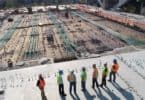A rough cost estimate is an initial estimate that estimates the cost of a project based on prior experience and other non-project data.
It is also known as a Conceptual Estimate or a Rough Order of Magnitude (ROM) estimate.
The Rough Cost Estimate is used for project screening, or deciding which project to pursue out of several options.
Because the project is still in the conceptual phase, the project definition is around 0 – 5%. Typically, it is not yet funded, and the primary components of the project have not been designed. In fact, there is just enough project definition to determine whether the project is a priority for the organization.
Accuracy
A rough cost estimate’s accuracy ranges between 30 and 50%. As with most estimate types, the accuracy is determined by what you want to compare it to; for example, if you still can’t decide between two projects, you would proceed with a more accurate estimate.
Types of Estimates
The Rough Cost Estimate is one of 5 primary estimate types:
- Rough Cost
To get an idea of the potential costs associated with a project. - Feasibility
To assess a project’s feasibility sufficiently to make a go/no-go decision. - Preliminary
To choose between several different options or alternatives within the project. - Substantive
Once the design is complete, the budget can be refined based on the quantities of resources available. - Definitive
Once the costs are known, ensure that a sufficient budget is available (quotes obtained, etc.)
Determination of a Rough Cost Estimate
Because there is no cost information prior to a Rough Cost Estimate, data from other projects, either within or outside of the organization, is used. Project-based organizations, such as construction, engineering, or software development firms, typically have enough information to generate a rough cost estimate based on internal data. Other organizations do not, but data can frequently be obtained from industry publications and other external sources.
There are three main sources of data for a rough cost estimate:
1.Analogous Estimating
This refers to obtaining data from a previous project and applying it to the new project. It is frequently necessary to apply a correction factor to make it more applicable to the new project, but it is a good start. An analogous estimate would be that if a house building company spent $200,000 to build a house, the new house will cost $220,000 based on square footage.
2.Parametric Estimating
This is when a known unit rate is used to generate an estimate. Most industries have industry-wide trade organizations with good average cost data per unit of time, materials, production units, or other relevant metric. These are not always free. Project-based organizations also keep track of average costs per unit. A parametric estimate would be $220,000 if a house building company knows that the cost of building a house is $110 per square foot and the house is 2,000 square feet.
3.Expert Judgment
I’ve put this one last because you’re unlikely to have access to an expert if you needed to use the other two methods. But, if you do, consult them first, not last. If you can find one, they are the most important source of information and will save you a lot of time. It might be worth paying a consultant for an estimate, or they might even be willing to give you some ballpark figures for free if it leads to future work.
Examples on Rough Estimate
- An insurance company recognizes the need for software development. The initial Rough Cost Estimate was based on guidelines found on the internet. The estimate is presented to management in order to determine whether or not the project is a priority for the organization.
- A manufacturing company recognizes the opportunity to upgrade some production equipment in order to reduce costs. The Rough Cost Estimate is generated by consulting industry publications that provide average cost data for the equipment that will be purchased. The estimate is presented to management to determine whether the idea is worth pursuing, i.e., whether the benefits outweigh the costs of proceeding to a feasibility (go/no-go) estimate.
- An airline wants to build a new hangar but has no idea how much it will cost. The rough cost estimate is generated using industry data and provides the company with an idea of whether the project can be completed.









